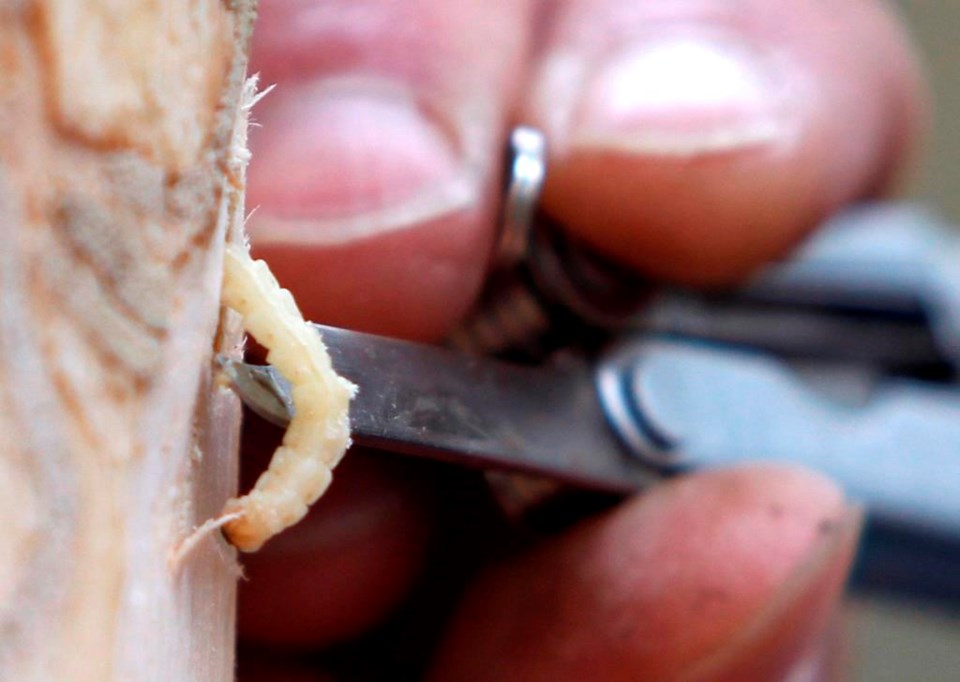TORONTO — Ontario only spends $4 million annually to fight invasive species despite the $3.6 billion economic impact they create, the province's auditor general said in her annual report.
Bonnie Lysyk said Ontario does not track dozens of invasive species in the province and conservation officers have never laid a charge under the 2015 act that sets rules to prevent and control the spread of those species.
"Overall, our audit found that the Natural Resources Ministry is not effectively monitoring and managing the introduction and spread of harmful invasive species in Ontario," Lysyk said.
The auditor general said there were years-long delays in regulating invasive species after the province completed risk assessments. Those regulatory delays are contributing to both the introduction and spread of invasive species, Lysyk concluded.
"The Natural Resources Ministry has only one staff member regularly performing risk assessment work, contributing to the delays in regulating invasive species," she said.
The report found that the Carolina fanwort -- an invasive aquatic plant that crowds out native plants, clogs irrigation systems and interferes with aquatic recreation -- was not regulated until five years after an expert provided a risk assessment to the ministry.
Lysyk also found that the ministry has left at least 30 harmful terrestrial invasive plants unassessed and unregulated. One such example is the tree-of-heaven, which hosts the spotted lanternfly, a federally regulated invasive insect that destroys vineyards, fruits, vegetables and hardwood.
The auditor general also discovered six of the invasive species -- creeping jenny, goutweed, Norway maple, periwinkle, spearmint and winter creeper -- can be bought in home and garden centres throughout the province.
The ministry lacks basic information to help monitor invasive species, Lysyk found.
"The ministry’s monitoring programs mainly rely on incidental observations instead of a regular and risk-based approach to invasive species surveillance," Lysyk wrote.
"Furthermore, we found that 33 invasive species identified as high risk by nearby jurisdictions were not systematically tracked by the Ministry and have been found in Ontario."
The Canadian Food Inspection Agency has been working with provinces since 2019 to fight hemlock woolly adelgid, an invasive insect that kills hemlock trees. But the CFIA told Lysyk the ministry has not responded to its recommendations, which includes a strategy to act immediately and to create a strategy to use beetles as a biological control.
The province has since told the auditor general it is working with the CFIA on the invasive insect, which has been found in Fort Erie, Ont.
The audit also found the province's conservation officers had not laid a single charge and only issued 11 warnings under the Invasive Species Act since it became law in 2015. The auditor general found the training provided to these officers was insufficient or absent altogether.
"As a result, many would be unable to identify invasive species encountered during patrols, necessitating external expert support to assist in identification when responding to tips," Lysyk wrote.
The ministry has acknowledged that it does not have enough staff to "effectively administer" the Invasive Species Act, Lysyk wrote. In 2015 and in 2018 the ministry requested but did not receive funding to address the issue from the Treasury Board, which instead told the ministry to divert the money from other programs.
The ministry did not do that, Lysyk said.
The ministry said it recognizes invasive species are an "established and growing ecological and economic threat that are negatively impacting the lives of Ontarians and reducing the province's resiliency to climate change."
"We're working hard in this province to make sure that invasive species don't get a foothold, and if they do, work with partners to try and control and eradicate them when possible," Natural Resources Minister Graydon Smith said at a press conference.
This report by The Canadian Press was first published Nov. 30, 2022.
Liam Casey, The Canadian Press

